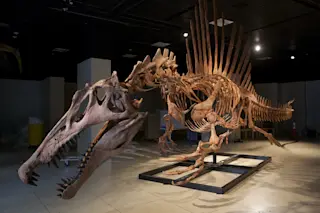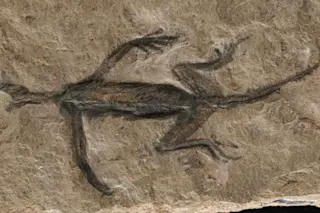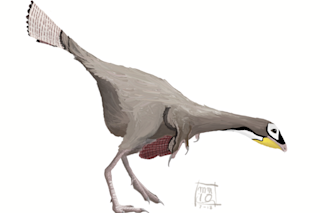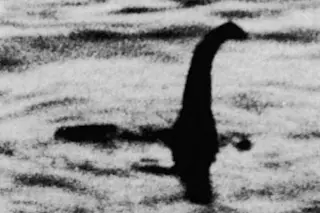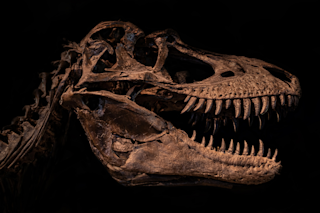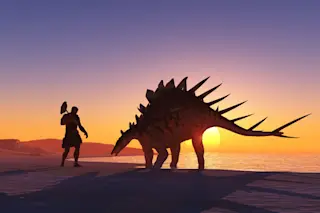Uncovered in Saharan Morocco, a new specimen of the dinosaur Spinosaurus aegyptiacus helped researchers confirm that the 50-foot carnivore was the largest land predator ever known. And that’s probably the least interesting thing about the strange animal; Spinosaurus is also the only aquatic dinosaur ever identified.
“Spinosaurus breaks the mold. It’s not just another T. rex-like predator, only bigger,” says Nizar Ibrahim, the University of Chicago paleontologist who led the dig. When it comes to its bones, “to be honest, one of the best modern analogs for it is the penguin.”
Spinosaurus lived about 95 million years ago in the massive river systems of what’s now northern Africa. It was a powerful swimmer, with a crocodilian snout, broad feet that may have been webbed, shortened but heavily muscled hind limbs and a propulsive tail similar to that of some fish.
Using CT scans of the new fossil to create a ...


